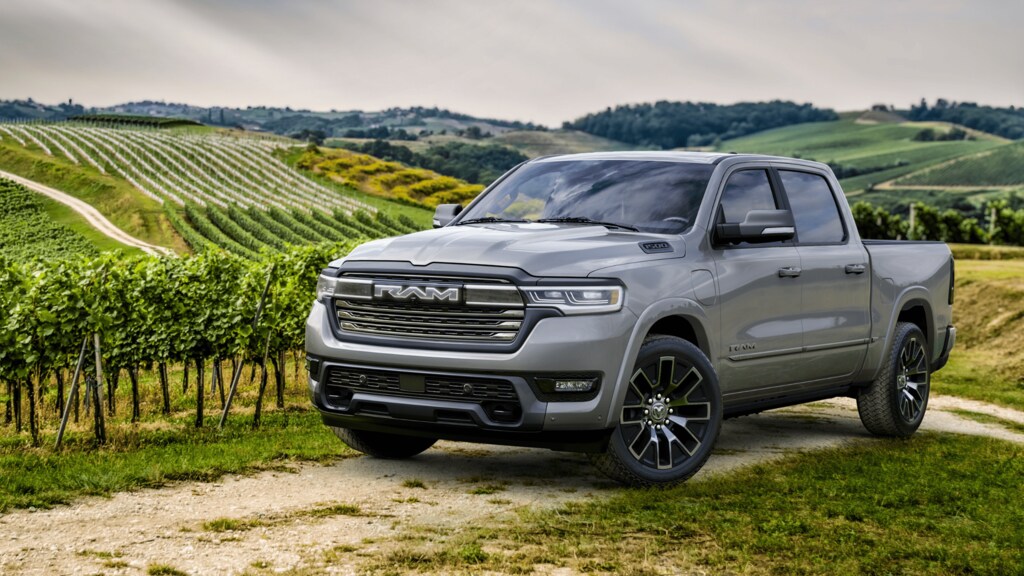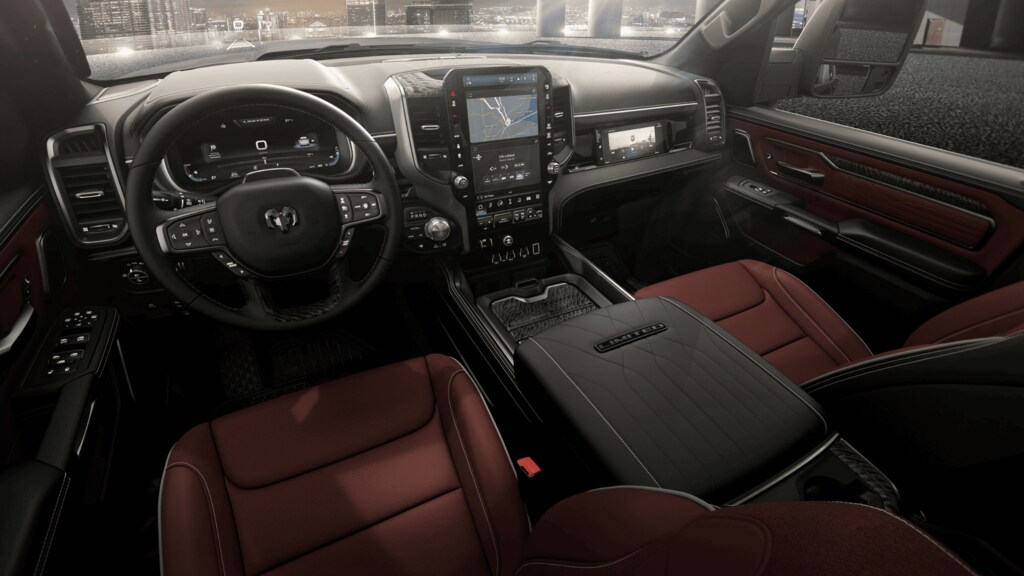2026 Ram 1500 near Greenville, SC

The 2026 Ram 1500 introduces a key development in its powertrain lineup with the return of the HEMI® V-8 engine. This decision, based on consistent demand, marks a deliberate shift toward offering expanded engine options within the 2026 Ram 1500 series. The V-8 configuration has been reintroduced with integrated eTorque hybrid technology, maintaining strong output while incorporating efficiency-focused systems. The Ram approach ensures that performance and capability remain functional components of this engine package across multiple trim levels.
HEMI® V-8 Engine Configuration and Output Characteristics
The 5.7-liter HEMI® V-8 engine returns with a performance rating of 395 horsepower and 410 pound-feet of torque. The torque curve remains broad and linear, providing stable pulling strength during acceleration and sustained towing. The aluminum block V-8 features a pushrod design and includes variable valve timing for refined combustion efficiency. The engine architecture supports a high-load operating range while maintaining reliability under heavy usage. The cylinder bore and stroke geometry is optimized for torque generation without introducing excessive vibration or unwanted engine harshness.
Fuel Saver Technology further improves fuel usage by automatically deactivating four of the eight cylinders during light-load conditions. This transition occurs without requiring driver input and helps conserve energy during cruising or deceleration. Additional support comes from the application of an 850-watt electric cooling fan system that uses pulse width modulation to adjust fan speed. This precision cooling management aligns fan output with thermal demands, minimizing parasitic losses and maintaining engine temperature targets during idle and high-output periods.
eTorque Mild-Hybrid Integration
The eTorque system operates as a belt-driven motor generator unit replacing the conventional alternator. Connected to a 48-volt lithium-ion battery pack, the system performs several functions designed to support engine performance and energy efficiency. On initial throttle application, eTorque delivers up to 130 pound-feet of supplemental torque to the crankshaft, helping enhance response during stop-and-go traffic and low-speed acceleration.
The lithium-ion battery provides 430 watt-hours of storage and is mounted in a noise-insulated enclosure located behind the rear seat. The housing includes internal venting and dual air-cooled fans for temperature control. The system also uses a 3-kilowatt DC-to-DC converter to maintain charging of the traditional 12-volt vehicle battery and associated electronics. Unlike fully electric systems, eTorque remains lightweight and compact, requiring minimal structural modification while retaining standard vehicle operation.
Start-stop transitions occur quickly and with reduced mechanical noise. The motor generator controls engine shutdown and restart functions during idle, while also recovering kinetic energy during deceleration. Additionally, eTorque works with the vehicle's shift programming to optimize gear transitions and reduce driveline harshness, contributing to lower overall noise, vibration, and harshness metrics.

Towing and Payload Capabilities
Equipped with the HEMI® V-8 and eTorque system, the 2026 Ram 1500 offers a maximum towing capacity of 11,470 pounds. Payload capability reaches up to 1,750 pounds, depending on selected configurations and equipment packages. The integration of a performance-tuned exhaust system and a 33-gallon fuel tank on select trims enhances both operational endurance and exhaust flow efficiency. These figures are consistent with intended light-duty applications requiring moderate to high hauling or trailering usage.
Suspension tuning and chassis geometry work in conjunction with powertrain calibration to maintain stability under full load. Transmission programming accommodates the torque characteristics of the V-8 engine to support smoother gear transitions, even when operating near maximum towing limits.
Engineered Cooling and Thermal Efficiency
The powertrain management system uses multiple thermal controls to ensure optimal operating temperature under varied conditions. The electric cooling fan system can modulate air flow in response to cooling demand, helping reduce energy draw during low-load operation. This design eliminates the mechanical drag typically associated with belt-driven fans, allowing for more consistent engine temperature regulation and improved efficiency.
A separate oil cooler and upgraded radiator components further support the vehicle's ability to handle extended towing or load-bearing use. Airflow patterns around the front grille and underbody are optimized to guide cooling air to critical systems without increasing aerodynamic drag. These engineering details contribute to durability across long operational cycles, particularly when exposed to high ambient temperatures or steep terrain.
Technical Implementation of Performance Features
The engine's integration with electronic control modules supports fine-tuned adjustments to ignition timing, throttle input, and valve timing. These calibrations are designed to respond quickly to changing demands while balancing power and fuel usage. Transmission software has been adapted to work with eTorque assist during gear changes, minimizing delay and torque interruption.
The 5.7-liter HEMI® V-8 retains a traditional starter motor for cold-weather operation, ensuring consistent ignition during sub-zero conditions. In situations where the eTorque system is not sufficient to perform cold starts, the starter motor engages to provide full mechanical cranking. This redundancy in starting systems ensures function under all climate variations and aligns with standard automotive service protocols.

Model Availability and Powertrain Packaging
The HEMI® V-8 configuration is now included in a wide range of 2026 Ram 1500 trims. Each trim includes the Symbol of Protest fender-mounted badge, a design element introduced to mark the return of the HEMI® powertrain. This detail identifies the vehicle as part of the expanded powertrain offering and is exclusive to the HEMI®-equipped models.
On Limited and Longhorn® trims, the engine is included as a no-cost upgrade. These variants also incorporate additional drivetrain enhancements and premium feature sets. The uniform integration of the HEMI® with existing suspension, exhaust, and electronic systems across trims ensures consistent output and functional reliability regardless of selected configuration.
Integrated Technology and System Functionality
Electrical systems supporting the eTorque hybrid operation remain fully compatible with existing vehicle electronics. Charging is managed by the DC-to-DC converter, ensuring that cabin electronics, lighting, and infotainment systems function independently of the hybrid battery load. The mild-hybrid architecture is designed to avoid interrupting traditional controls, maintaining familiarity for drivers accustomed to conventional V-8 setups.
The battery control module monitors charge cycles, temperature thresholds, and discharge events to maintain battery longevity. Regenerative braking processes are coordinated with standard braking systems to maximize energy recovery while minimizing brake pad wear. These systems operate in the background and require no input from the driver to remain active and effective.
Visit McKinney Chrysler Dodge Jeep® & Ram near Greenville, SC
For drivers interested in experiencing the combination of established V-8 performance with refined hybrid functionality, the 2026 Ram 1500 provides an integrated solution. The return of the 5.7-liter HEMI® V-8 with eTorque technology delivers measurable performance enhancements while preserving the vehicle's practical towing and payload capabilities. You can explore this advanced configuration in person by scheduling a test drive with our team at McKinney Chrysler Dodge Jeep® & Ram near Greenville, SC. The combination of hybrid torque assist, fuel-saving cylinder deactivation, and high-output thermal control systems provides a measurable difference during operation. Visit our dealership to operate the 2026 Ram 1500 in varied conditions and evaluate its performance, technology integration, and overall utility.Make an Inquiry
* Indicates a required field